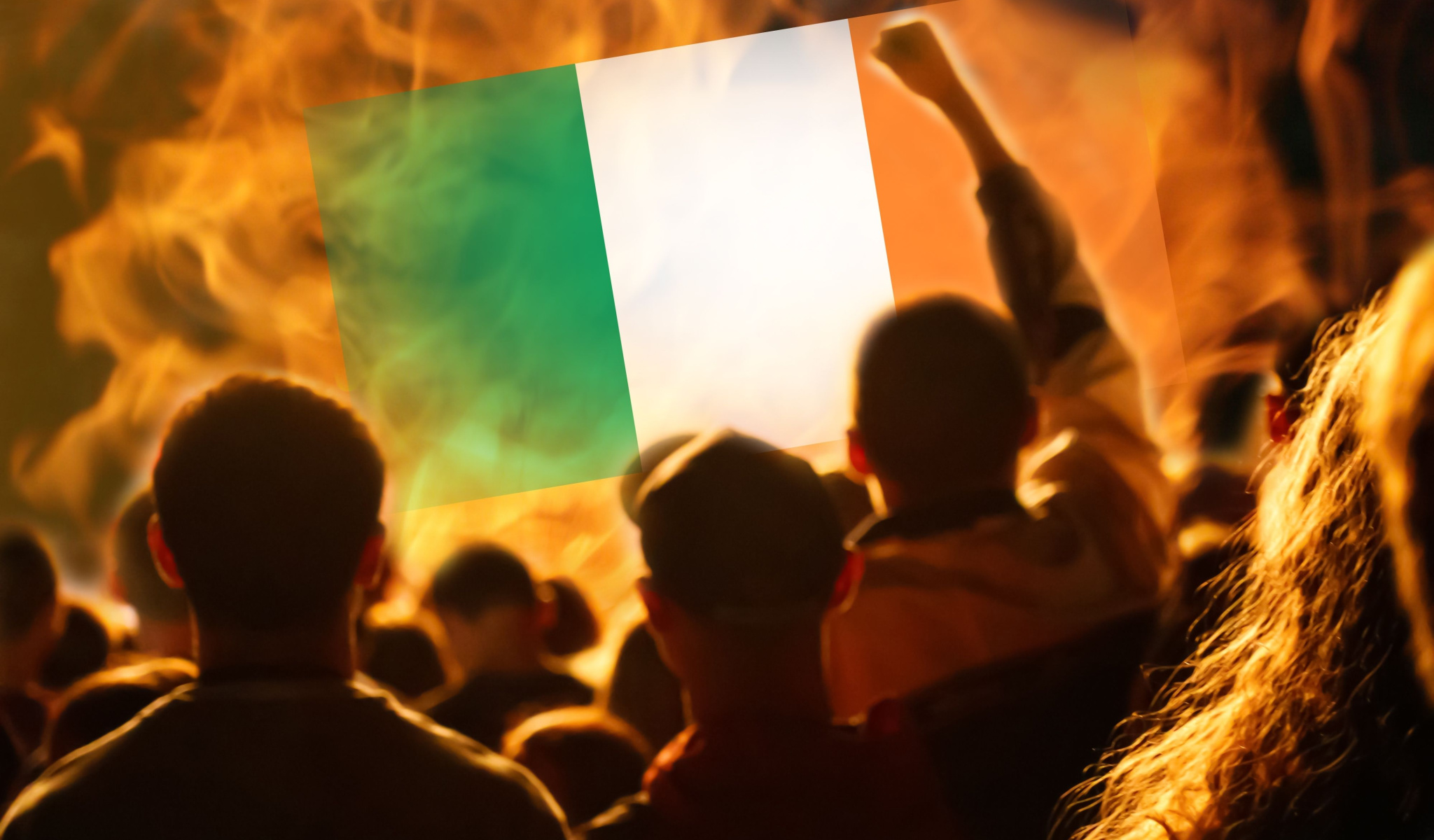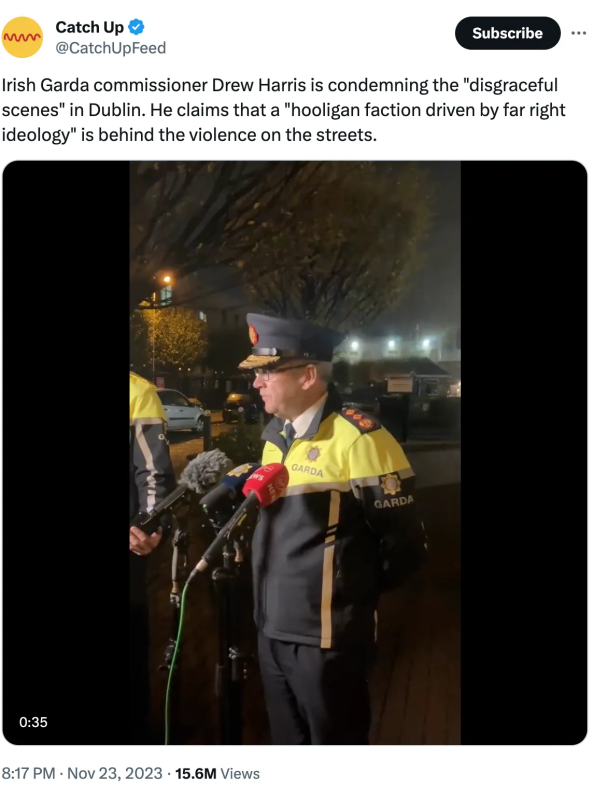
You might think that a government faced with a barbaric public stabbing of schoolchildren and an unprecedented night of rioting in its capital city would extend condolences to the victims, take a deep breath, and try to figure out how a city managed to spiral out of control on its watch. But instead, Thursday’s riots in Dublin were met by a shallow, one-dimensional analysis by all of the key authorities involved: to blame the “far right.”
For example, Garda Commissioner Drew Harris blamed the violence on the streets on a “hooligan faction driven by far right ideology.” Taoiseach Leo Varadkar pledged at a news conference to “modernise our laws against incitement to hatred and hatred in general.” And Minister for Justice Helen McEntee said that a “thuggish and manipulative element” was using the earlier incident to “wreak havoc.”

The Irish government would have us believe that the most destructive riot in Dublin in living memory was not a symptom of failed governance, but the result of an ideological fringe group going on a looting spree. That is a suspiciously convenient narrative for the powers that be, for it absolves them of all responsibility for losing control of the city. By fingering a Far-Right fringe, public officials can wash their hands of any role they themselves may have played in bringing the city to the brink of anarchy.
But blaming these riots on the “far-right” only serves as an excuse for not engaging in serious reflection about the deeper causes of this incendiary atmosphere, and the ensuing events. These events did not come out of nowhere and cannot be simplistically reduced to the work of a fringe “far-right” mob. “Far-right” talk is an excuse for not thinking hard about what led up to this and how public authorities lost control of Dublin’s city centre.
Of course, any sane and sensible person would recognise that going on a looting spree and setting fire to trams and buses is an absolutely destructive, anti-social, and counterproductive way to react to a horrible crime. And given that there is documentary evidence that some of the rioters used explicitly anti-immigrant rhetoric, yes, there was undeniably an element of “Far-Right” sentiment at work in these riots, if, by that, we mean indiscriminate hatred and anger directed toward immigrants in general.
Nonetheless, to suggest that Thursday’s chaotic scenes can be blamed exclusively on the “Far-Right” would be profoundly disingenuous. To begin with, many of the “hooligans” that joined the riots seemed at least as interested in looting shops and finding an excuse to set something on fire as in joining a political movement. Secondly, even if there were important xenophobic elements among the rioters, this does not explain how a city can be so fragile as to succumb to chaos and looting in a few hours.
The attempt to scapegoat the “Far-Right” for the breakdown in public order that we saw on Thursday conveniently ignores the fact that successive Irish governments have allowed criminals to wander the streets of Dublin with relative ease. Budding criminals know they will face lenient sentences, partly because there is simply no room in Irish jails to hold them for long, leading to a “revolving door” scenario in our prisons, as pointed out five months ago by the Irish Prison Services.
People feel less safe in Dublin city than ever before, and there is a widespread belief that criminals in Dublin can act with impunity, or else will not suffer a prison sentence proportionate to their crimes. The government most certainly must answer for failing to address this problem over the years. This failure most certainly cannot be blamed on “far-right” ideology.
Thirdly, while there is no excuse for attacking police officers or setting vehicles alight, the Irish government has undoubtedly paved the way for these riots by refusing to listen to its citizens for years. Ireland’s political establishment has consistently been dismissive toward reasonable concerns about its immigration and refugee policies, reducing them to the rantings of a “Far-Right” fringe. This has created an atmosphere of pent-up resentment and frustration, and it was only a matter of time before this frustration erupted onto the streets.
Many aspects of Ireland’s immigration policies strike people as profoundly unfair and destructive, including allowing very large numbers of asylum-seekers to avail of free or cheap housing on the taxpayer’s dime while Irish citizens are frozen out of the housing market; and flooding local communities with large numbers of refugees with no prior consultation whatsoever. In response to complaints, the Irish government has just doubled down, and given us more of the same “open-door” immigration policies.
So when a city is taken over by thugs for a night, we should be less worried about whether there were “far-right” elements among them, and more worried about why they felt they could openly engage in this level of brazen violence and destruction and get away with it; and how the atmosphere in Dublin become so tense and angry that a single stabbing incident, however unspeakable, could spark riots on a level we have not seen in generations.
Republished from the author’s Substack
Disclaimer
Some of the posts we share are controversial and we do not necessarily agree with them in the whole extend. Sometimes we agree with the content or part of it but we do not agree with the narration or language. Nevertheless we find them somehow interesting, valuable and/or informative or we share them, because we strongly believe in freedom of speech, free press and journalism. We strongly encourage you to have a critical approach to all the content, do your own research and analysis to build your own opinion.
We would be glad to have your feedback.
Source: Brownstone Institute Read the original article here: https://brownstone.org/

